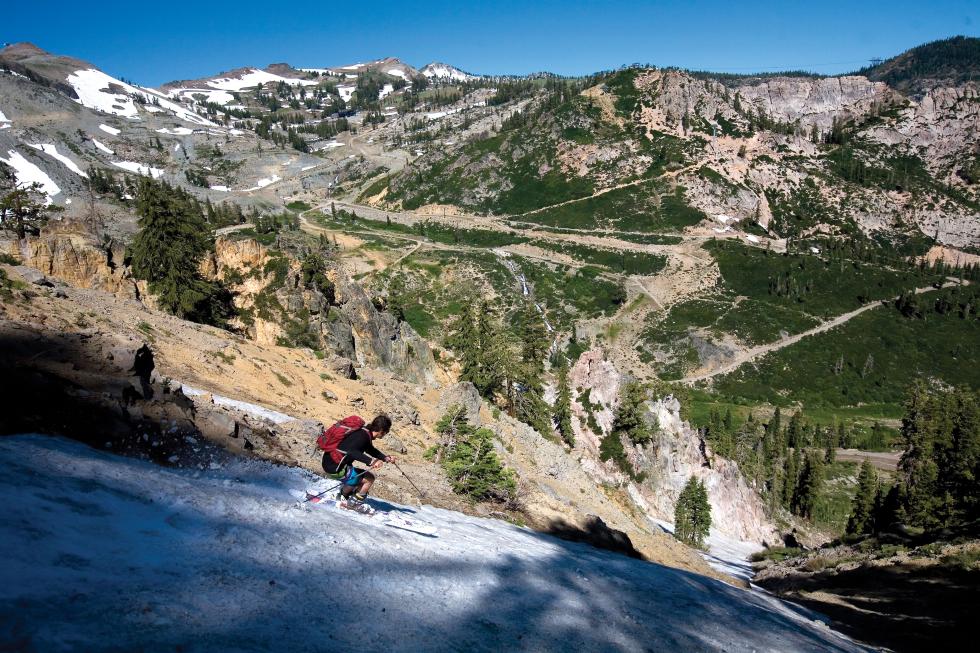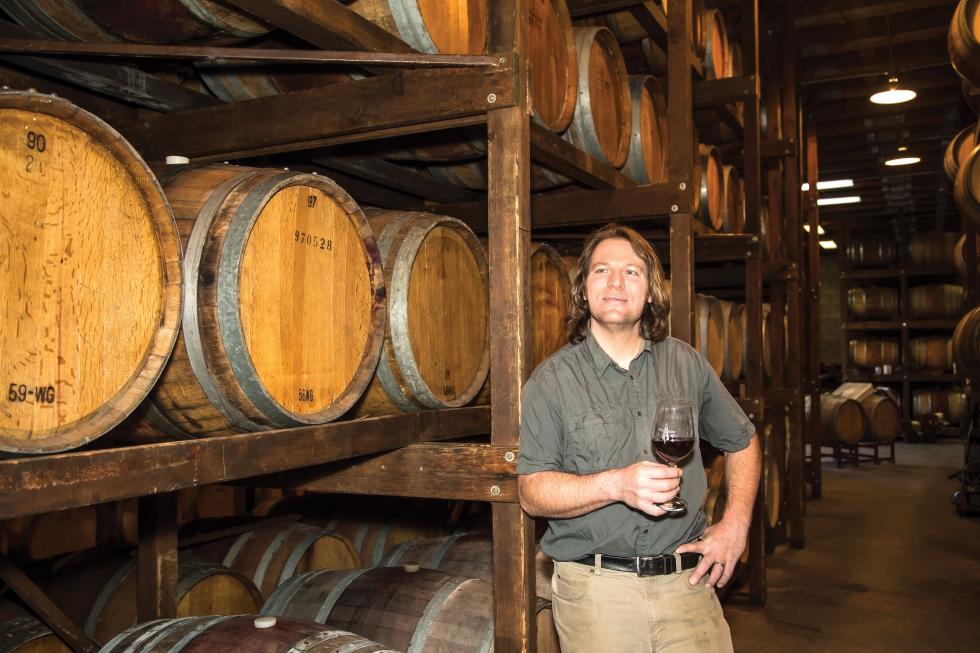In a part of the state with seemingly boundless natural assets, tourism is the number one industry for counties beyond Sacramento’s city limits. Aided by the rise of culinary travel, the farm-to-fork movement, and the craft beer and wine industries, this decade finds rural counties a bigger economic driver for the state than ever.
In 2014-15, hotel occupancy, tourism spending and travel-generated jobs all reached five-year highs. But in such a mercurial industry — underscored in recent years by drought and wildfires — regional leaders and business owners have had to get creative to keep dollars coming in, from cross-county collaborative marketing efforts to full-on branding overhauls.
“Throughout all of California, tourism is a huge factor,” says VisitCalifornia CEO Caroline Beteta. “It’s such a critical component, and sometimes it’s overlooked because travel and tourism is so omnipresent that it is almost invisible.”
Connecting the Dots
For the last 10 years, VisitCalifornia played a major role in the industry’s success, facilitating regional marketing efforts by combining smaller counties with their neighbors and providing matching funds for promotional opportunities that cross county borders and reach bigger audiences. The statewide nonprofit breaks California into 12 distinct regions: Sacramento, Amador, El Dorado, Nevada, Placer, San Joaquin, Sutter, Yolo and Yuba counties constitute the state’s “Gold Country.” The efforts have paid off in a big way.
The tourism industry saw a huge boost in 2014-15: Hotel occupancy in the Gold Country through November 2015 was up by over 11 percent from five years ago; the travel industry fielded more than 8,500 tourism-related jobs in 2014 since 2010; and travel spending — dollars spent by travelers in a given market — totalled a combined $628.2 million more than at the start of the decade, according to a study by economic analyst firm Dean Runyan Associates.
In 2014, travelers spent the most money in California — which drew more than $117.5 billion in tourism dollars alone — than any other state, according to the study, which makes sense in a state that is home to multiple “gateway” cities like Los Angeles, San Francisco and San Diego. Gateway cities are international destinations with a major airport and sufficient infrastructure to support visitors from around the world. The key for rural markets is getting travellers from gateways into surrounding areas.
“Visitors don’t see regions or boundaries; they’re in it for experiences,” Beteta says. “The volume of spending takes place in the gateways, even though it is abundant in rural areas, and the secondary destinations help the gateway areas because it’s a reason to come back.
“That’s the power of the California travel industry: The diversity holds everyone together, and we have the infrastructure and the lift to bring in people from all over the world.”
Of the eight counties in VisitCalifornia’s Gold Country, not including Sacramento, tourists spent the most money in Placer, El Dorado and San Joaquin counties in 2014 — more than $2.3 billion combined — thanks in large part to those counties’ major respective draws like the scenic appeal of Lake Tahoe and Apple Hill, and Stockton, which gets a big boost from business travellers.
It is no secret that Northern California is flush with natural amenities, arguably more so than any other part of the state.
Folsom Tourism Bureau Executive Director Mary Ann McAlea says that every California destination has in some combination the same market pillars: agriculture, outdoor recreation, arts and culture, historical attractions and culinary experiences.
“This has to be one of the most tourism-rich destinations ever: Any direction you’re going to see something fabulous,” McAlea says of Northern California. “But It’s been proven time and time again that telling visitors that they can have everything they want isn’t going to motivate them.
“What’s going to motivate them to come here is for us to tell them, ‘Here’s the experience you’re going to have.’”
McAlea says that marketing is the single biggest challenge for smaller tourism organizations, which is why VisitCalifornia’s efforts over the past 10 years have been so crucial for rural counties. The nine counties in California’s Gold Country meet quarterly with each other and private tourism organizations, pay membership fees, and receive matching funds from VisitCalifornia of up to $30,000 per year.
McAlea says that in 2015 alone, rural counties were able to yield major results, including:
- The California State Visitor Guide, which features a three-page spread highlighting the Gold Country and its nine counties along Highway 49 Co-op advertisements in statewide wine publications, including Steppin’ Out and AAA’s VIA Magazine
- A regional map detailing Gold Country destinations distributed at visitor centers up and down the state, trade shows and media events
- Regional representation at 2015 International Pow Wow, an annual trade show with more than 1,000 exhibitors and representatives from more than 70 countries.
“We’re looking at a breadth of amenities that is really interesting to an international traveler, but none of those destinations on their own could really mount an effective marketing campaign to go after that,” McAlea says. “Instead, we’re able to participate in some really effective co-op marketing that helps us to increase the amount of international visitation that the region has. “It changes the equation.”
Roadblocks
Still, even the best marketing efforts cannot plan for nature’s agenda, and rural areas usually pay the highest price. It is an industry standard that Placer County Visitors Bureau & California Welcome Center-Auburn Executive Director Mora Rowe knows all too well: Placer County is one of the north state’s biggest travel markets, responsible for more than 10,600 jobs and almost a billion dollars in earnings in 2014.
Still, nature has served up significant challenges for the county’s seasonal businesses: The state’s four-year drought slowed Tahoe’s booming ski market as total tourism jobs dropped by 1.4 percent from 2013-14. Frequent wildfires caused the cancellation of the region’s highest-profile event, the IRONMAN Triathalon. Organizers were forced to cancel the 2015 race just minutes before it was set to begin due to smoke from nearby fires. In September, World Triathlon Corp. announced they were pulling the event out of Tahoe, its host since 2012, citing challenging environmental and weather conditions. The financial impact of this remains to be seen, but Rowe thinks it will certainly be a hit for the rural communities that depend on visitors drawn by the event.
“That’s part of life,” she says. “It certainly impacts you, because everything with our small rural counties is such a fine balance.”
Tahoe slopes, Spring 2014 -— While the hotel industry suffered
over the last four years of drought, advance bookings for the
2015-16 season are up 35 percent from the previous year.

On Tahoe’s north shore, another challenge for local leaders is finding consistent draws in between the boom seasons of winter and summer, when visitors flock to the slopes and the lakeshores, respectively.
Businesses in North Tahoe live and breathe off of tourism, says North Tahoe Resort Association tourism director John “JT” Thompson, and the region’s shoulder seasons between winter and summer are steadily shrinking every year. Events like Tough Mudder and the Spartan Race World Championships, in addition to increased promotion of year-round activities like mountain biking, hiking and fine dining kept visitors coming back in 2015.
While hotels on the slopes took a hit over the last four years of the drought, Thompson points out that advance bookings at hotels in North Tahoe for 2015-16 are up by more than 35 percent from 2014-15.
Still, the fluctuation in the market year-to-year underscores the unpredictability that comes with living on nature’s dime.
Wining and Dining
With the widespread popularity of the region’s farm-to-fork movement and the meteoric rise of the craft beer industry, culinary tourism is one of the fastest growing markets across California.
“People want to get to know the farmers and engage with where all this food is coming from,” Rowe says.
Throughout the region, destination dining has been a major boost for rural areas that capitalize on their vast farming roots, aided more than ever by the craft beer and wine industries. California has more breweries — 450 total, up 20 percent from the previous year according to a 2014 California Craft Brewers Association economic impact report — than any other state. Rowe says that marketing this growing industry has been a big boost to the rural economy, resulting in campaigns like the Placer County Ale Trail, which maps out the county’s myriad craft breweries for international travelers who have exhausted the state’s historically more popular draws.
“You’re getting international travellers that have explored Napa, Sonoma — the bigger spots, and they’re really looking at secondary markets now to have a unique authentic experience,” Rowe says. “When you’re in this kind of marketplace, if you’re at a brewery, more than likely you’ll meet the brewmaster; if you’re at a winery, then you’ll more than likely meet the grower.”
El Dorado County, which raked in $647.5 million in travel spending in 2014, features some of the oldest and most diverse vineyards in Northern California.
At Boeger Winery in Placerville, owner Justin Boeger points out chardonnay grapes on a hillside of a small valley, where cool air pools and allows the grapes to flourish, and zinfandel vines along a distant ridge, which thrive in the warmer air at higher elevations. The microclimates created by the peaks and valleys of the county’s rolling hills allow for dozens of grape varietals to flourish on their hillsides.
Justin Boeger, owner of Boeger Winery in Placerville, says wine
enthusiasts are starting to take El Dorado County more seriously
as a tasting destination.
(photo by Ryan Salm)

Being a member of organizations like the Apple Hill Growers Association, to which all of the county’s wineries belong, helps restaurants and growers partner together, but Boeger says that getting the word out is still a challenge.
“I think 20 years ago if you asked someone what they thought of the wine industry in El Dorado, they’d say, ‘Oh yeah, hobbyists,’” Boeger says. “And now people realize it’s a serious business in a high-quality region. Our weak point is, one, getting exposure where it’s most effective, and then developing a consistent message that really reflects the general truth about the area.”
The message, though, seems to be spreading. On weekends, Boeger says his tasting room sees more than 500 visitors per day, up considerably from when his family bought the property in the 1970s.
In the wake of greater success than at any other point this decade, Northern California tourism remains one of the most unique and important industries in the state. As the industry evolves, regional leaders and business owners continue to search for new ways to entice travelers from all over the world to get on the highways and out of urban enclaves to explore everything this region has to offer.
Because in California’s Gold Country, as Bill Watterson’s spiky-haired protagonist once said to his stuffed tiger in the iconic comic strip, Calvin and Hobbes, “There’s treasure everywhere.”



